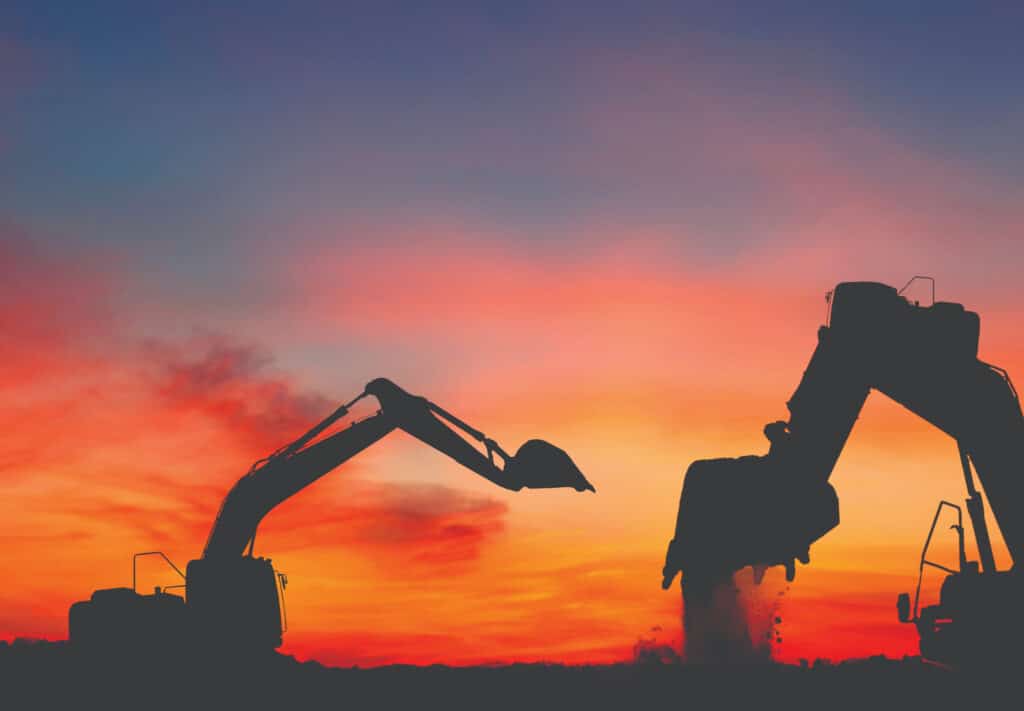Uncategorized
KPMG Looks to the Mining Horizon
A new report from KPMG examines at the prospects of a net-zero future for the mining industry – and lithium sits in the centre of the equation. As the…

A new report from KPMG examines at the prospects of a net-zero future for the mining industry – and lithium sits in the centre of the equation.
As the world moves ever closer to a decarbonised future, it’s becoming clearer than ever that the mining industry will play a vital role in helping to reduce the reliance on fossil fuels.
KPMG’s ‘Sustainability on the horizon: The prospects of a net-zero future for metals and mining companies’ details the challenges and opportunities Australia’s resources sector must face in order to reduce its carbon footprint and achieve a decarbonised future.
When KPMG and Vantage Research conducted a survey of more than 320 metals and mining leaders in May last year, they unearthed two key challenges that many believe may inhibit with plans for a sustainable future: altering production patterns in the face of shifting demand; and making substantial changes to the production footprint.
Almost 30 per cent of mining executives surveyed planned to achieve net-zero emissions by 2025.
“A further 40 per cent (would achieve net-zero emissions) by 2030,” KPMG’s global mining leader Trevor Hart said. “A total of 87 per cent of the miners surveyed said they would have delivered net-zero emissions by 2035.”
According to KPMG Australia’s national leader of decarbonisation transformation Cle-Anne Gabriel, industry leaders had plans on committing to their net-zero targets.
“Executives say the most effective measures that will help their companies meet net-zero targets are, first, to ensure their company communicates clearly and fully to stakeholders and, second, to see to it that net-zero objectives are incorporated into overall strategy,” she said.
KPMG said many external factors have undercut the industry’s ability to integrate greener resources into its operations, including the COVID pandemic, supply-chain disruptions, the war in Ukraine, and the surging demand for battery materials.
Creating and achieving goals that satisfy the demands of shareholders, governments and employees has been an admittedly neglected focus for major mining leaders. According to KPMG, only 30 per cent of companies have integrated environmental, social and governance (ESG) goals into enterprise strategy, while a further 48 per cent are in the process of doing so.
The report found there was no unanimous response to such a broad task, as inconsistency among government and business heads plague options for concise ESG action. A combination of limited labour and fiscal resources and lax strategising are also to blame for poor attempts at bring about change.
Despite this situation, KPMG Australia national mining and metals leader Nick Harridge spoke optimistically about the country’s outlook for resources as the economy shifts towards a low-carbon future.
“The Australian experience reflects the KPMG report where more than one-third of respondents predicted they will significantly change their portfolio of products towards commodities and metals used to accelerate the transition to cleaner energy,” he said.
“Locally, we continue to see critical minerals as the centrepiece for the sector in 2023.”

Australia has a wealth of key critical minerals in lithium, nickel, aluminium, cobalt and copper. As the country transitions away from fossil fuels, lithium appears to be the frontrunner in the race to replace the use of traditional resources.
As one of the main users of lithium, electric vehicles (EV) are estimated to be only roughly one per cent of the 1.4 billion vehicles in the world. KPMG estimates that more than two billion EVs would need to be made to fully satisfy global demand for internal combustion vehicles by 2050.
As the demand for EV manufacturing continues to rise, so too does the demand for production of critical minerals.
Despite its importance, lithium mining is still in its infancy. Global production is forecast to rise to 1000 metric kilotons (kt) by 2024. If lithium was solely used for EV production, it would take 100 years to produce enough to fully alleviate demand.
“Lithium investment is really just beginning to meaningfully increase in Australia,” said Harridge. “Mining investment is increasingly turning towards it and other critical minerals.
“Given that the price of lithium has surged in the last year, the incentive to invest further in lithium production and circularity remains very high.
“We estimate lithium production would need to grow by around 12 per cent per year every year until 2050 to produce enough to have two billion EVs on the roads. Given that lithium production is expected to grow at nearly double that pace in the near term, and that lithium investment is likely to accelerate, rather than slow, that pace of growth over time is reasonable.
“If we assume that lithium production continues to increase by 20 per cent per year until 2030, then production would need to rise by around seven per cent per year thereafter to meet EV demand – with other producers coming online, the pace of growth in Australia could slow to this and the world would still be able to meet total demand for lithium.”
While lithium procurement continues to develop, alternate technologies can supplement the demand. KPMG is hopeful that improvements in technology, while not yet commercially available, will reduce the volume of lithium required in car batteries and partially offset the global appetite.
Gabriel said demand for critical minerals to aid in decarbonisation already outweighed supply.
“The supply of minerals essential for decarbonisation, and for energy sustainability and security, is already an area of geopolitical rivalry, and will continue to be, resting unpredictability in markets,” she said.
Overall, lithium demand will remain strong in the short-term, but the required level of production is achievable with strong investment.
Harridge asserts that Australia is and will continue to produce almost half of the global supply of lithium.
“The significant volume of investment that is set to take place should support supply in Australia over the next decade,” he said. “We see the incentive to increase lithium mining is set to rise and that means not just production but also refining.”
Increasing lithium production and refinement alone is not enough. These practices also need to be conducted through greener means.
Australia, which has historically transported unrefined lithium to China, is now investing in lithium refineries itself.
This investment is intended to support Australia’s projected growth in the refinement industry. The country is expected to house 10 per cent of the world’s lithium hydroxide refining capacity, with that number said to rise to 20 per cent in 2027. This process is especially costly given the intended credentials needed to remain sustainable.
Gabriel suggested that the growing interest in lithium and other critical minerals could become a catalyst for future trade ventures.
“Looking to the future, partner countries are likely to be prepared to pay a premium for ‘friend-sourcing’ their supply of minerals to ensure reliability and sustainability,” she said.
“There is potential for Australia – a country regarded internationally as a safe democracy with a stable financial market – to move into the supply of critical minerals essential for decarbonisation.”














